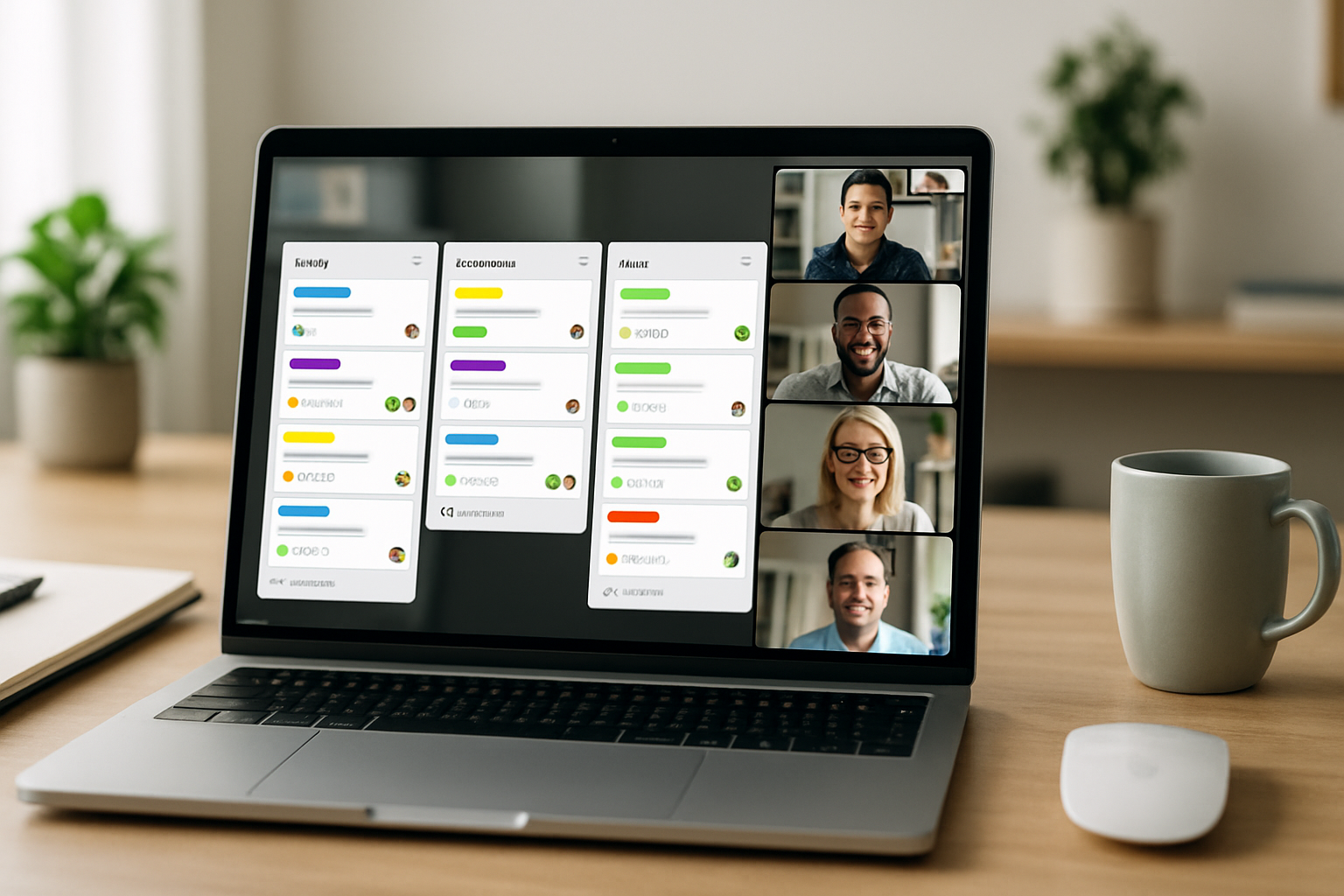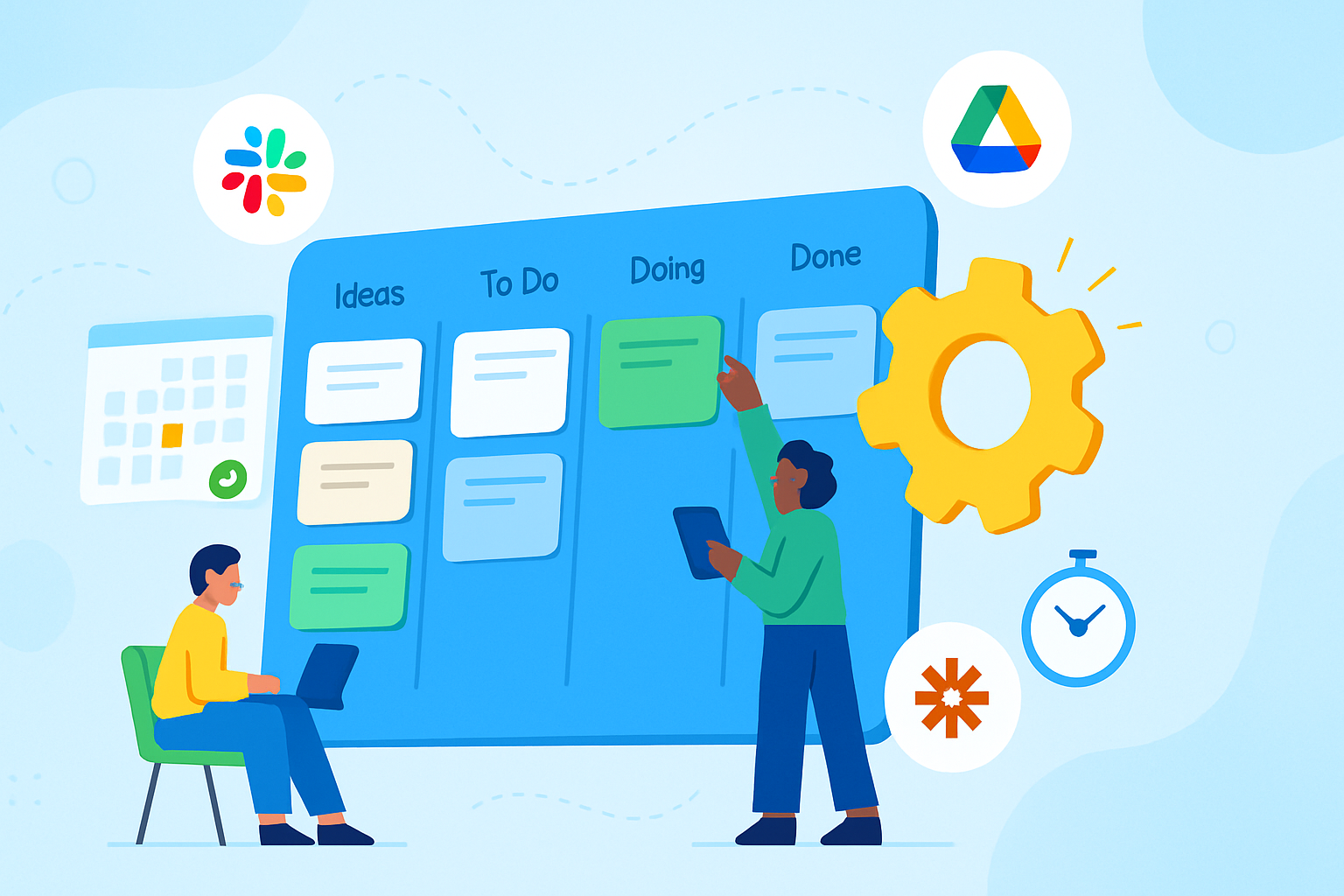· business · 7 min read
Trello for Remote Teams: Tips to Enhance Collaboration and Accountability
Learn practical Trello strategies for remote teams: build transparent workflows, assign tasks clearly, automate follow-ups, and use communication patterns that reduce friction and increase accountability.

Introduction
Imagine a remote team where everyone knows what to work on, nothing falls through the cracks, and handoffs happen without lengthy meetings. You can build that with Trello. This article gives you concrete setups, templates, automations, and communication patterns to make collaboration transparent and accountability natural - not a policing exercise.
Why Trello works for remote teams (brief)
Trello’s visual boards map to how people think about work: cards for units of work, lists for stages, and labels/fields for context. It’s lightweight and flexible. Use that flexibility to reduce questions, not increase chaos.
Quick wins - what to set up in the first 30 minutes
- Create a single source-of-truth board per project or workflow (not dozens of overlapping boards).
- Add a clear board purpose in the board description and pin a “How to use this board” card at the top of the first list.
- Standardize one assignee per card. One owner means clear accountability.
- Add a Definition of Done (DoD) checklist as a card template so everyone knows when work is truly complete.
A few minutes of setup saves hours later.
Design transparent workflows
- Choose a readable board structure
Start simple and evolve. Common patterns:
- To Do → In Progress → In Review → Blocked → Done
- Backlog → Ready → Picking Up → QA → Done
- Draft → Editing → Scheduling → Published (for content teams)
Add explicit lists for “Blocked” and “Needs Info” so blockers are visible. Never bury blocked work in comments or tags.
- Make criteria explicit
Add a pinned card that explains what each list means. Example:
- Ready - Prioritized and groomed - has acceptance criteria and an estimate.
- In Review - Waiting for a reviewer to verify acceptance.
This reduces guesswork and task ping-pong.
- Use labels and custom fields sparingly
Labels are great for quick visual signals (priority, request type, client). Custom Fields let you add structured info (effort estimate, due timezone, sprint number). But too many labels/fields create noise. Limit to 3–5 meaningful dimensions.
- Limit Work in Progress (WIP)
Set team-level WIP limits. If more than X cards are In Progress for an individual or the team, stop picking up new work and focus on finishing. You can enforce WIP with simple rules (see Automation section).
Task assignment and accountability
- One owner per card
Assign exactly one person to each card. If multiple people are involved, assign secondary contributors as watchers or add checklist-item assignees (see below). Ownership prevents confusion about who’s responsible.
- Break work into small, deliverable cards
Long, vague cards hide progress. Break tasks into steps that can be completed in a single day or a single sprint. Small cards equal more moments of real accountability.
- Use checklist item assignments for shared work
When a card needs multiple people, keep the card owner as the coordinator and assign checklist items to individuals. Trello checklists support assigning items to members so responsibility is explicit.
- Make acceptance criteria and DoD part of every card
Use a checklist template (or a checklist added automatically via a card template) with items like:
- Acceptance criteria met
- Unit tests passing
- Peer review completed
- Deployed to staging
If the last item is “Marked Done on Board” then completion is trackable and consistent.
Communication strategies for asynchronous teams
- Treat Trello as the place for context, not real-time chat
- Put decisions, links, and meeting notes on cards so asynchronous teammates can catch up quickly.
- Use card descriptions and attachments for spec documents; keep comments for short updates and clarifying Q&A.
- Use comments with @mentions and summaries
When you need someone’s attention, @mention them and add a clear, short call to action: what you want and when you need it. Example: “@maria Please review acceptance criteria by tomorrow 3pm PT. If okay, move to In Review.”
- Status updates - make them predictable
Establish lightweight async rituals: daily card updates, a weekly “Progress Snapshot” list, or a “Standups” list where team members drop one-line updates.
- Use meeting cards for agendas and actions
Create a recurring card for recurring meetings (standups, planning). Add the agenda and action items as checklist items. After the meeting, move action items into the project board or convert them into cards.
Automation and Power-Ups - let Trello do the heavy lifting
Automation (Butler)
Butler reduces manual steps and keeps boards consistent. Examples you can add right away:
- Move card to “Done” when all checklist items are complete.
- When a card is moved to “Blocked”, add a red label and post a comment - “This card is blocked - please add blocker details and ETA.”
- When a due date is 48 hours away, post a comment to the card and notify the assignee.
Example Butler commands (natural language format used in the Trello Butler interface):
when a card is moved into "Blocked", add the red "Blocked" label and comment "Please add blocker description and ETA"
when the due date is approaching in 48 hours, post comment "Friendly reminder: due in 48 hours" and @notify the card member
when all checklist items are complete in a card, move the card to "Done"Automations like these remove follow-up drudgery and make accountability automatic.
Power-Ups and integrations
Pick power-ups that reduce context switching:
- Calendar for deadline visibility
- Slack integration to push only important board events to a channel (customize to avoid noise)
- Jira or Github power-ups for engineering teams linking cards to commits/PRs
- Google Drive or Confluence for specs and attachments
Use integrations to send selective, meaningful notifications - not every comment.
Board templates and examples
Project delivery board
- Backlog / Ready / In Progress / In Review / Blocked / Done
- Custom fields - Priority, Story Points, Sprint
- Butler rules - move to Done when DoD checklist complete
Content production board
- Ideas / Drafting / Editing / Scheduled / Published
- Labels - Channel (Blog, Social, Newsletter), Priority
- Automations - when card moved to Scheduled, set publish date and add to Calendar
Ops / Incidents board
- Reported / Triage / Investigating / Resolved / Postmortem
- Important - Create a “Severity” custom field and a rule that @mentions on-call when severity >= 2
Rituals, routines, and metrics for accountability
- Weekly board reviews
Short, timeboxed reviews: scan “In Progress” and “Blocked” lists, remove stale cards, and confirm ownership. Make it a team ritual.
- Daily async standups in Trello
Use a Standups list or a dedicated short card per person where they drop 1–2 lines: Yesterday, Today, Blockers. This keeps updates centralized and searchable.
- Track flow metrics, not busy work
Measure cycle time (time from Ready to Done) and blocked time. Use Trello’s Dashboard or third-party analytics to identify bottlenecks. Reduce cycle time by eliminating handoffs.
- Use SLAs for service teams
For support or operations, add a custom field for SLA and automate reminders when SLA thresholds are close. This codifies accountability for response times.
Common pitfalls and how to avoid them
- Overboarded - Too many boards and scattered context. Fix: consolidate and define board ownership.
- Notification noise - Everyone muted Trello. Fix: tune notifications, integrate only key events to Slack, and encourage use of watchers instead of subscribing to every card.
- No single source of truth - Docs in multiple places. Fix: attach spec documents to cards and link back to the canonical doc.
- Too much process - Over-automating every tiny action creates brittleness. Fix: automate the repetitive, high-value parts only.
Checklist of practical items to implement this week
- Add a “How to use this board” card and pin it.
- Standardize one owner per card and create a card template with DoD.
- Implement a Butler rule to move cards to Done when the DoD checklist is complete.
- Create a “Blocked” list and add a rule that tags and notifies stakeholders when a card is blocked.
- Start a weekly 15-minute board review ritual.
Further reading and tools
- Trello Guide: https://trello.com/guide
- Butler automation basics: https://support.atlassian.com/trello/docs/introducing-butler/
- GitLab’s guide on remote work (great async culture practices): https://about.gitlab.com/company/culture/all-remote/guide/
- RACI matrix (Responsibility assignment): https://en.wikipedia.org/wiki/Responsibility_assignment_matrix
Conclusion
Trello is a tool for clarity. Set clear ownership, make workflows explicit, and automate follow-up where it matters. When your remote team can see what’s in progress, who owns it, and what blocks it - collaboration becomes smoother and accountability becomes a natural consequence of good design, not an enforcement problem.



